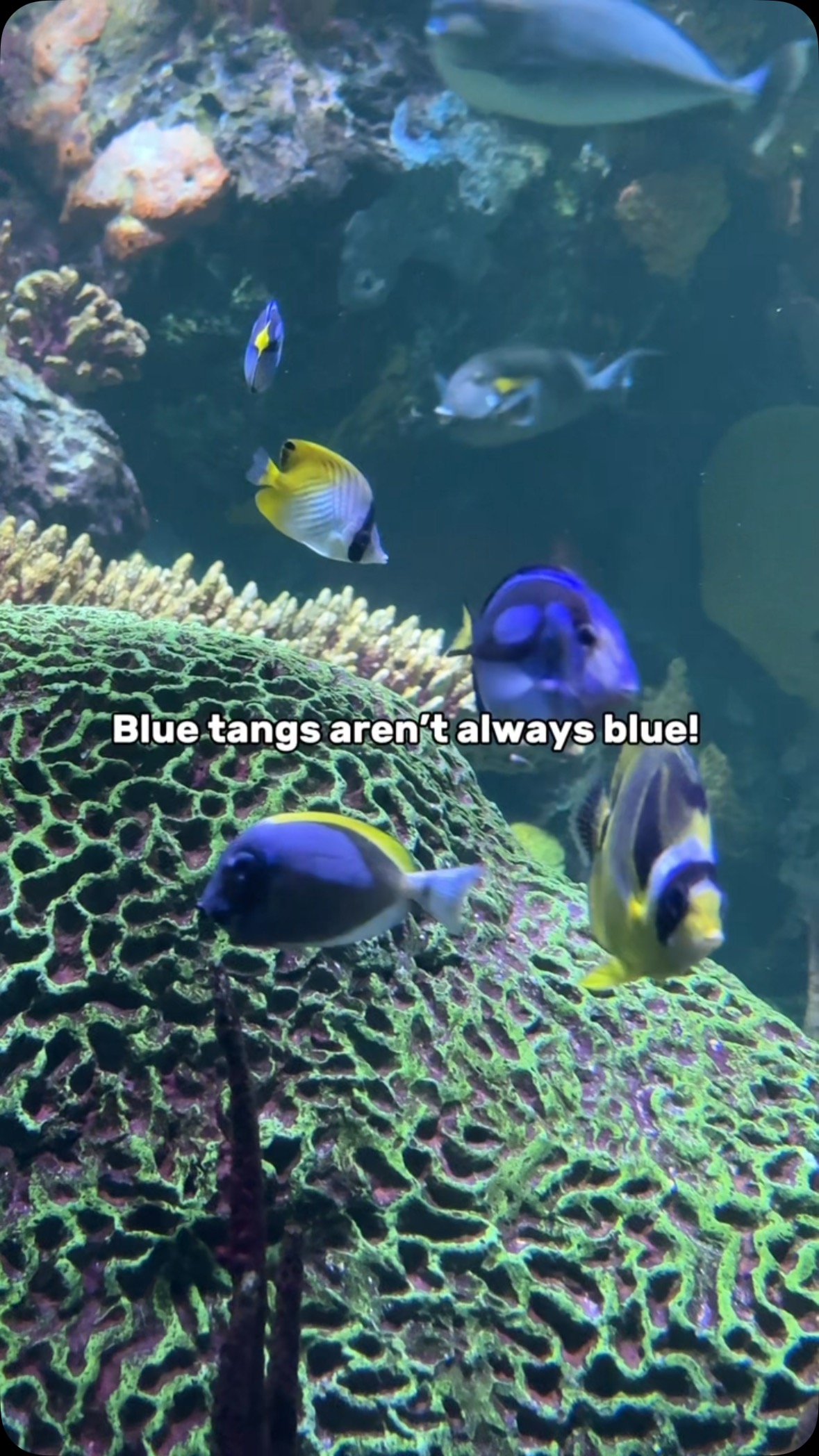- Juvenile blue tangs exhibit a striking color transformation as they mature, shifting from vibrant yellow to deep blue.
- This color change plays a crucial role in their ecological adaptation and survival within marine environments.
- Blue tangs, part of the Paracanthurus family, are integral to coral reef ecosystems, contributing to biodiversity and marine health.
- Conservation efforts for blue tangs focus on sustainable fishing practices and habitat preservation.
- The aquarium trade’s impact on blue tang populations highlights the need for responsible wildlife management and conservation policies.
The blue tang, scientifically known as Paracanthurus hepatus, is a fish renowned for its vivid color transformation during its lifecycle. As juveniles, they are predominantly bright yellow, which gradually changes to a striking blue as they mature. This shift in coloration is not merely aesthetic; it carries significant ecological implications. The ability of these fish to change their color is a fascinating adaptation that enhances their survival in the dynamic and competitive marine environment.
The transition from yellow to blue in juvenile blue tangs is a fundamental part of their development. The bright yellow coloration of young tangs serves multiple purposes. While it may seem to stand out in the vast ocean, it is actually a clever camouflage against predators. The yellow blends with the sunlight filtering through the water, disrupting the outline of the fish. As the fish matures, it shifts to a vibrant blue, a color that plays into social signaling and identification within the species. This color change is orchestrated by specialized cells called chromatophores in the skin, which expand and contract to alter the hues.
Blue tangs operate within coral reef ecosystems, where they play a vital ecological role. The reefs are vibrant underwater ecosystems teeming with life, and the blue tang helps maintain the delicate balance of these habitats. They graze on algae that grow on coral, preventing overgrowth that can suffocate the coral. Their foraging behavior encourages coral health and, by extension, supports the myriad species that rely on these reefs for survival.
However, blue tangs face significant challenges due to environmental pressures. Overfishing, particularly for the aquarium trade, has put a strain on their populations. While their popularity surged following the release of animated films, it’s crucial to recognize the ecological impacts of capturing these fish from the wild. Sustainable fishing practices are vital to ensuring the survival of blue tang populations in natural habitats. Efforts are being made to breed them in captivity, which could reduce the need for wild capture, thereby preserving genetic diversity and ecosystem stability.
Conservation of blue tangs also hinges on protecting their natural habitat. Coral reefs are facing threats from climate change, pollution, and destructive fishing techniques. These threats not only endanger the blue tangs but also the entire reef ecosystem. Efforts to mitigate these impacts include establishing marine protected areas, enforcing fishing regulations, and community-based initiatives to restore and preserve reefs. Such measures require international cooperation and policy enforcement to be effective.
The aquarium trade presents both challenges and opportunities for blue tang conservation. While demand for these colorful fish continues to rise, it is imperative to manage this demand through sustainable and ethical practices. Aquarists and hobbyists play a role in conservation by supporting breeders who prioritize the well-being of fish and the sustainability of their collections. Public awareness and education are key components in promoting responsible trading and highlighting the importance of conservation.
In terms of wildlife management, blue tangs serve as an example of the need for comprehensive and informed approaches. Effective conservation policies are grounded in scientific research that considers biological, ecological, and socio-economic factors. This requires collaboration between scientists, conservationists, policymakers, and local communities to devise strategies that safeguard both the species and their habitats. Education initiatives aimed at fostering a sense of stewardship and responsibility among the public can also drive positive changes in conservation practices.
As an integral part of oceanic biodiversity, blue tangs offer insights into the complexities of marine life and the interconnectedness of ecosystems. Their journey from yellow to blue is emblematic of the broader processes that govern life in the ocean. By understanding and protecting such species, we help maintain the intricate tapestry of life that supports human existence and the planet at large. Through careful management, innovation, and public engagement, the future of blue tangs and the ecosystems they inhabit can be secured for generations to come.
*****
Source Description
From yellow to blue, these fish know how to scale up their style! 💛💙
Juvenile blue tangs undergo a stunning transformation as they grow. SEA fish in all colors of the rainbow in Rainbow Rock!


